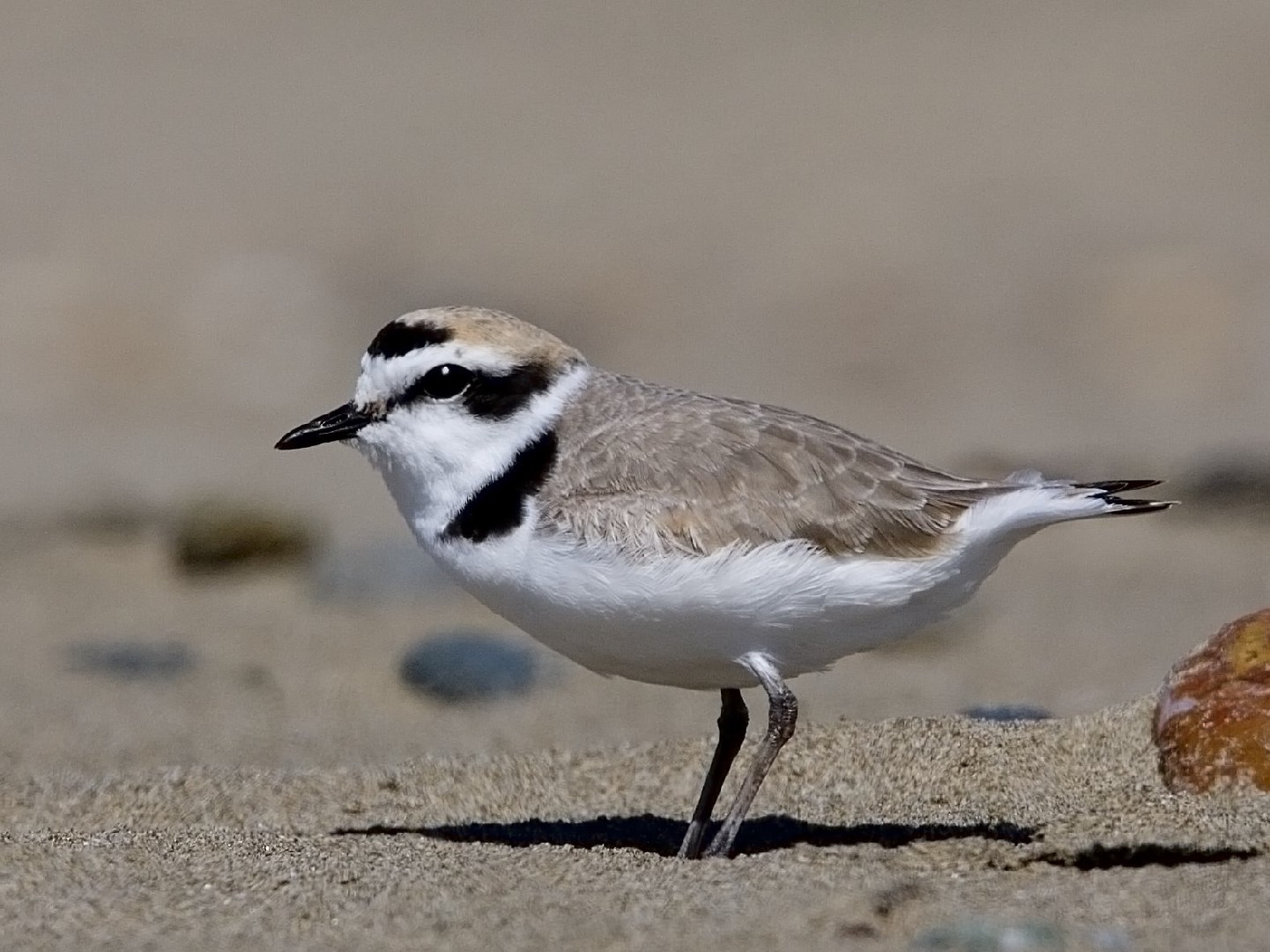Snowy Plover
A species of Typical plovers Scientific name : Charadrius nivosus Genus : Typical plovers
Snowy Plover, A species of Typical plovers
Botanical name: Charadrius nivosus
Genus: Typical plovers
 Photo By Mike Baird from Morro Bay, USA , used under CC-BY-2.0 /Cropped and compressed from original
Photo By Mike Baird from Morro Bay, USA , used under CC-BY-2.0 /Cropped and compressed from original Description
The snowy Plover is a small shorebird with a distinctive white belly. It inhabits sandy beaches, salt flats, and coastal dunes along both coasts of North America and in parts of Central America. It feeds on small insects and crustaceans found in the sand. This species is known for its ground-nesting habits, with females laying their eggs in shallow scrapes on the ground. The Snowy Plover is also known for its elusive behavior, often running to hide rather than taking flight when threatened. 
Size
15-18 cm (6-7 in)
Colors
Black
Bronze
White
Life Expectancy
19 years
Nest Placement
Ground
Clutch Size
2 - 6 eggs
Incubation Period
1 - 3 broods
Number of Broods
26 - 33 days
Feeding Habits
Snowy Plover predominantly consume invertebrates like crustaceans and insects. Utilizing a run-and-pause foraging tactic in sandy or damp habitats, they hunt molluscs, worms, and flies, sometimes catching them in flight. Their diet varies from beach kelp flies to inland beetles and amphipods.
Habitat
Snowy Plover typically inhabit coastal regions, specifically preferring sandy or salty flats near water bodies. They thrive at sea level along ocean shorelines, barrier islands, and are also drawn to inland habitats such as saline lake shores, river gravel bars, and the peripheries of reservoirs and wastewater ponds. Snowy Plover can adapt to human-altered environments like abandoned lots, showcasing their versatility in finding suitable nesting grounds, which are scant of vegetation and often within a relatively temperate climate zone.
Nest Behavior
Nesting for snowy Plover involves selecting a site with a distinguishing feature and may adapt to use shade from vegetation for safety. Egg-laying follows the nest-building, and both parents share in caring for the eggs and chicks.
Nest Characteristics
Snowy Plover's nest is typically a shallow depression on open sandy areas, possibly lined with pebbles, shell fragments, or fish bones. It may be near notable objects like kelp or shells, sometimes under vegetation for protection.
Dite type
Aquatic invertebrate eater
Migration Overview
The snowy plover breeds on sandy coasts and brackish inland lakes, and is uncommon on fresh water. It nests in a ground scrape and lays three to five eggs. Breeding birds in warmer countries are largely sedentary, but northern and inland populations are migratory, wintering south to the tropics. In North America, the snowy plover breeds from Texas and Oklahoma west to California and up the coastline to Oregon and Washington. The coastal form's primary breeding concentration is in central and southern California. 
General Info
Feeding Habits
Bird food type
Sounds
Call
Recording location: Peru
Call
Recording location: Peru
Behavior
Snowy Plover are known for their distinctive territorial and breeding behaviors. Males assertively defend their zones, courting females by showcasing potential nesting spots. These birds engage in polyandry; females may leave males to care for the offspring while they breed again. Interestingly, the chicks of snowy Plover are precocial, fending for themselves soon after hatching. Outside the breeding season, snowy Plover exhibit a more sociable side, forming flocks during migration and winter, a stark contrast from their otherwise solitary nature.
Species Status
Not globally threatened.

 Photo By Mike Baird from Morro Bay, USA , used under CC-BY-2.0 /Cropped and compressed from original
Photo By Mike Baird from Morro Bay, USA , used under CC-BY-2.0 /Cropped and compressed from original Scientific Classification
Phylum
Chordates Class
Birds Order
Shorebirds Family
Plovers Genus
Typical plovers Species
Snowy Plover